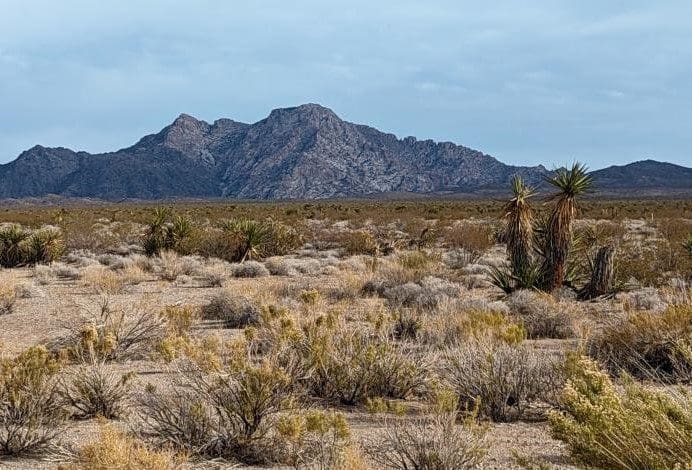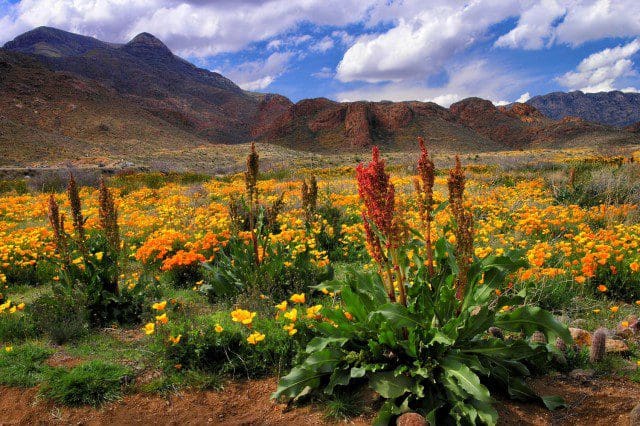
New Sites Welcome
On March 21, 2023, President Biden announced the designation of two new national monuments in the Southwest: Avi Kwa Ame (Ah-VEE kwa-meh) National Monument and Castner Range National Monument. WNPA joins many advocacy groups in celebrating this step in the continued preservation of the nation’s natural and cultural heritage.
The lands of Avi Kwa Ame—the Mojave name for Spirit Mountain and the surrounding landscape in the southernmost corner of Nevada—“are among the most sacred places on Earth for the Mojave, Chemehuevi, and some Southern Paiute people,” recognized President Joe Biden in his proclamation. This powerful landscape also holds sacred significance for other tribal nations and Indigenous people including the Cocopah, Halchidhoma, Havasupai, Hopi, Hualapai, Kumeyaay, Maricopa, Pai Pai, Quechan, Yavapai, and Zuni. Many Indigenous advocacy groups worked tirelessly to ensure this sacred land receive the protection from industrial development that this federal designation brings. Read President Biden’s full proclamation here.

For more than ten thousand years, Indigenous people have lived and traveled in this land, finding medicinal and spiritual value in the kindness of the plant and animal species that made and continue to make their home in this geologically diverse landscape. Shaped by volcanic activity, the many mountain ranges surround deep valleys that offer some of the quietest spaces for reflection and connection in what is now the United States. Petroglyphs, pictographs, pottery fragments, and evidence of encampment tell the story of the land and the many Indigenous people whose descendants still live in the region.
The many groups who supported the designation of Avi Kwa Ame as a national monument invite all public lands advocates and national park lovers to sign a thank-you note to the current administration for protecting such a spiritually, historically, and naturally important place.
Also joining the National Park System is Castner Range National Monument. Set against glowing plains of blooming Mexican gold poppies, Castner Range NM is located on Fort Bliss near El Paso, Texas. The monument preserves the history of the world’s largest overland air defense missile range and training center and recognizes the cultural heritage of the many Indigenous people who trace their ancestry to this stunning desert landscape, including Apache and Pueblo peoples and the Comanche Nation, Hopi Tribe, and Kiowa Indian Tribe of Oklahoma. Castner Range National Monument holds evidence of Indigenous peoples’ presence in the area since 8000 BCE.

A saga that spans generations, the designation of Castner Range National Monument officially dates back to 1971, according to records, though Indigenous communities have fought for and protected this land for far longer. Bolstered by the efforts of community groups and alliances like the Frontera Land Alliance, El Paso Community Foundation, and Nuestra Tierra Conservation Project, the grassroots movement to shift the view of this land from commodity to community gained much-needed traction in 2016 during the National Park Service’s centennial.
The people who have been on the front lines of conservation efforts have recognized that climate change affects marginalized communities disproportionately and view this as a step toward authentically caring for all El Pasoans, tribal nations, and related communities. Send your appreciation to the current administration and local representatives for taking steps to protect Castner Range National Monument.
Both sites will preserve the nation’s complex histories and conserve the landscapes of the American Southwest that are both sacred and beautiful from threats of industrial development and climate change. We at WNPA honor the efforts of each individual who brought us to this moment today—these efforts were indeed monumental.
By: Julie Thompson



